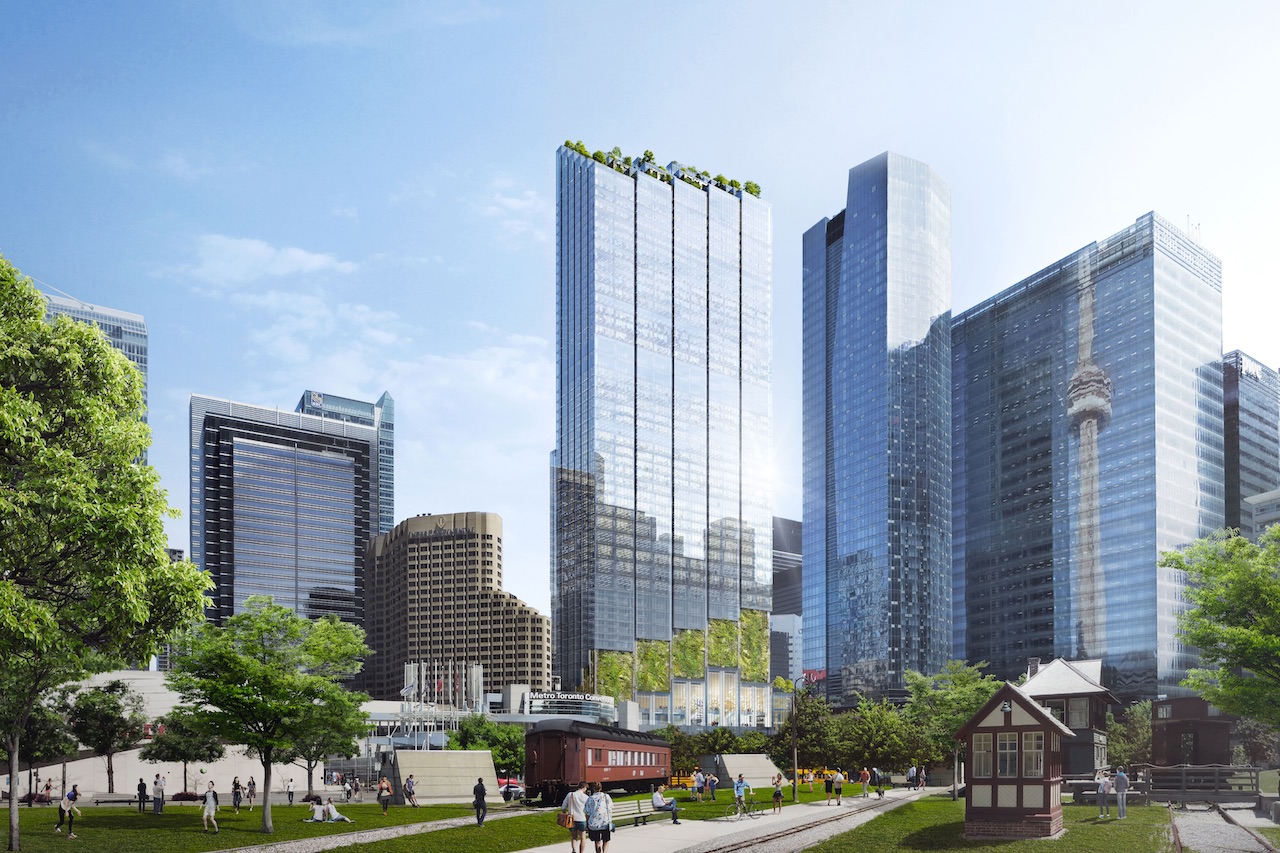Strange Advance
Active Member
I'm not at all opposed to the general design of this, except that it's so broad. I think it should be slimmed down and made taller.
Agreed.I'm not at all opposed to the general design of this, except that it's so broad. I think it should be slimmed down and made taller.

Both are incredibly underwhelming, especially when one considers the talent behind both proposals; though, I realize that the CC3 proposal will undergo more refinements. Hopefully the same will happen with this project because this is not off to a good start.project database says "developer: Allied properties REIT". is WestBank not involved in this? cause I saw renders in WestBank's Instagram story.
ps: most of these people complaining about the design of this project are the same people that were cheering for CC3 last week. LOL!
Haha, what whole trees and huge branches will be flying off this building every time there is a wind storm?
Both are incredibly underwhelming, especially when one considers the talent behind both proposals; though, I realize that the CC3 proposal will undergo more refinements. Hopefully the same will happen with this project because this is not off to a good start.
There are plenty of scientific reasons why skyscrapers don’t—and probably won’t—have trees, at least not to the heights which many architects propose. Life sucks up there. For you, for me, for trees, and just about everything else except peregrine falcons. It’s hot, cold, windy, the rain lashes at you, and the snow and sleet pelt you at high velocity. Life for city trees is hard enough on the ground. I can’t imagine what it’s like at 500 feet, where nearly every climate variable is more extreme than at street level.
Wind is perhaps the most formidable force trees face at that elevation. Ever seen trees on the top of a mountain? Their trunks bow away from the prevailing winds. That may be the most visible effect, but it’s not the most challenging. Wind also interrupts the thin layer of air between a leaf and the atmosphere, known as the boundary layer. The boundary layer is tiny by human standards—it operates on a scale small enough that normally slippery gas particles behave like viscous fluids.
For plants, the boundary layer serves to control evapotranspiration, or the loss of gas and water through the tiny pores on a leaf’s underside, known as stomata. In calm conditions, a comfortably thick boundary layer can exist on a perfectly smooth leaf. But plants that live in hot or windy places often have adaptations to deal with the harsh conditions, including tiny hairs on their leaves that expand each leaf’s surface area and thus its boundary layer. Still, plants in these environments aren’t usually tall and graceful. In other words, not the tall trees we see in architectural drawings.
Next let’s add extreme heat and cold to the mix. Extreme cold, well, we all know what that does. It can kill a plant by turning the water inside its cells into lethal, crystalline knives. At the other end, hot conditions post a different set of challenges. To cool off, plants can “sweat” by opening their stomata to release water vapor, at least as long as there’s water available. But even then, plants reach a limit. At certain temperatures, which vary from plant to plant, the photosynthetic machinery inside a leaf starts to break down. Keep in mind these are temperatures on the surface of a leaf, not ambient air temperature. The surface of a leaf—especially in direct sunlight, as on the unshaded side of a skyscraper—can be many degrees hotter than the air, up to 14 degrees C in some species (nearly 26 degrees F).
Then there are the logistical concerns. How are these trees going to be watered and fertilized? Pruned? How will they be replaced? How often will they need to be replaced? As someone who grows bonsai, I can tell you that stressed plants require constant attention—daily monitoring, in fact, and sometimes even more frequently. It’s not easy. Growing simple green roofs is a chore, and those plants are chosen for their hardiness and low maintenance. Trees are generally not as well-adapted to the wide range of conditions likely to be experienced on the side of a skyscraper.

Something reflective of Bjarke’s greatest imagination. Some supple lines would also be welcome. This proposal looks like it could have been designed by any run of the mill firm. I am not seeing the originality or verve that I would expect from one of the world’s leading architects. I find this design extremely boring and far below the capability of its architect.I disagree completely. This tower is stunning! Lights, nature/trees, modern industrial feel, huge floor plates, epic addition to the skyline. What more do you want!?!
That’s like saying that the presence of cladding in a building’s renderings is a distraction. The trees are integral to the design. You’ve alleged that there won’t be any trees and I’ve provided examples demonstrating that when BIG includes trees in a building’s design, they deliver trees when built. Not including them is not considering the tower as it will be built.
Are your trees surrounded by glass?How many trees do you have on your property? I have five, and every wind storm I'm picking up branches, some branches are so big i have to use a chainsaw to chop them up . Now imagine if they fell off a 200m+ building to the ground?
Don't ignore climate change. We have had some pretty crazy weather in Toronto in recent years, Ice storms, wind storms, plus snow/thrunder storms, which can cause a lot of damage to trees.
